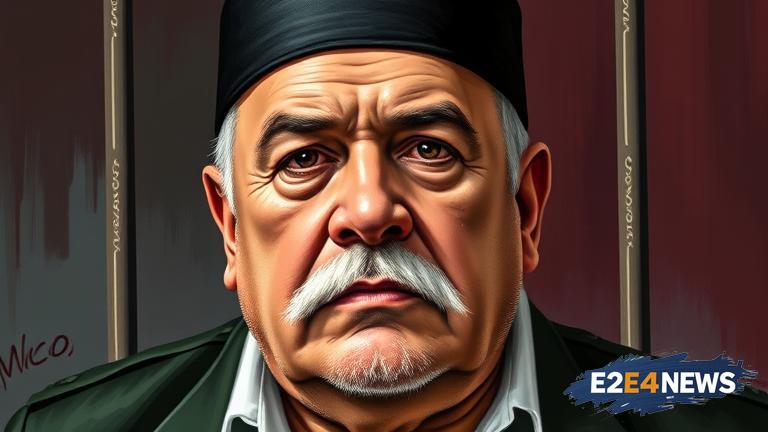In a shocking turn of events, Mexican drug lord Ismael ‘El Mayo’ Zambada has pleaded guilty to multiple counts of drug trafficking, money laundering, and other related charges. As part of the plea deal, El Mayo has agreed to forfeit a staggering $2.56 billion in assets, which is believed to be one of the largest forfeitures in history. The 75-year-old cartel leader is now facing life imprisonment, bringing an end to his decades-long reign as one of the most powerful and elusive drug lords in the world. El Mayo’s plea deal marks a significant victory for law enforcement agencies, who have been pursuing him for over 20 years. The guilty plea is also seen as a major blow to the Sinaloa cartel, which El Mayo co-founded and led for many years. The cartel is responsible for smuggling massive amounts of cocaine, heroin, and other narcotics into the United States, and has been linked to numerous violent crimes and murders. El Mayo’s rise to power began in the 1980s, when he started working as a low-level smuggler for the Sinaloa cartel. Over the years, he built a reputation as a ruthless and cunning leader, earning the respect and fear of his peers. Despite being one of the most wanted men in the world, El Mayo managed to evade capture for decades, using his vast network of loyal associates and corrupt officials to stay one step ahead of the law. However, in recent years, the net began to close in on him, as law enforcement agencies stepped up their efforts to bring him to justice. In 2020, El Mayo’s son, Vicente Zambada Niebla, was extradited to the United States, where he pleaded guilty to drug trafficking charges and agreed to cooperate with authorities. The younger Zambada’s cooperation is believed to have played a significant role in the case against his father, providing valuable insights and evidence that helped build the case against El Mayo. The plea deal is also seen as a major success for the US-Mexico cooperation on counter-narcotics efforts, which has been a key area of focus for both countries in recent years. The case against El Mayo was built on a mountain of evidence, including testimony from former associates, wiretaps, and other surveillance. The evidence showed that El Mayo was involved in the smuggling of massive amounts of narcotics into the United States, using a variety of methods, including tunnels, boats, and planes. The plea deal also includes a provision that requires El Mayo to provide information and cooperate with authorities in their ongoing efforts to dismantle the Sinaloa cartel. The case is a significant milestone in the fight against organized crime, and is seen as a major victory for law enforcement agencies around the world. The guilty plea is also a reminder that no one is above the law, and that even the most powerful and elusive criminals can be brought to justice. As El Mayo faces life imprisonment, his legacy as one of the most notorious drug lords in history is cemented, serving as a cautionary tale about the dangers of organized crime and the importance of cooperation between law enforcement agencies. The case against El Mayo is a testament to the power of perseverance and determination, and serves as a reminder that justice can be slow, but it is always worth the wait. The plea deal is also a significant blow to the Sinaloa cartel, which is believed to be one of the most powerful and influential cartels in the world. The cartel’s influence extends far beyond Mexico, with tentacles reaching into the United States, Europe, and other parts of the world. The case against El Mayo is a major step forward in the fight against organized crime, and is seen as a significant victory for law enforcement agencies around the world. The guilty plea is also a reminder that the war on drugs is far from over, and that there is still much work to be done to dismantle the cartels and bring the perpetrators to justice.
